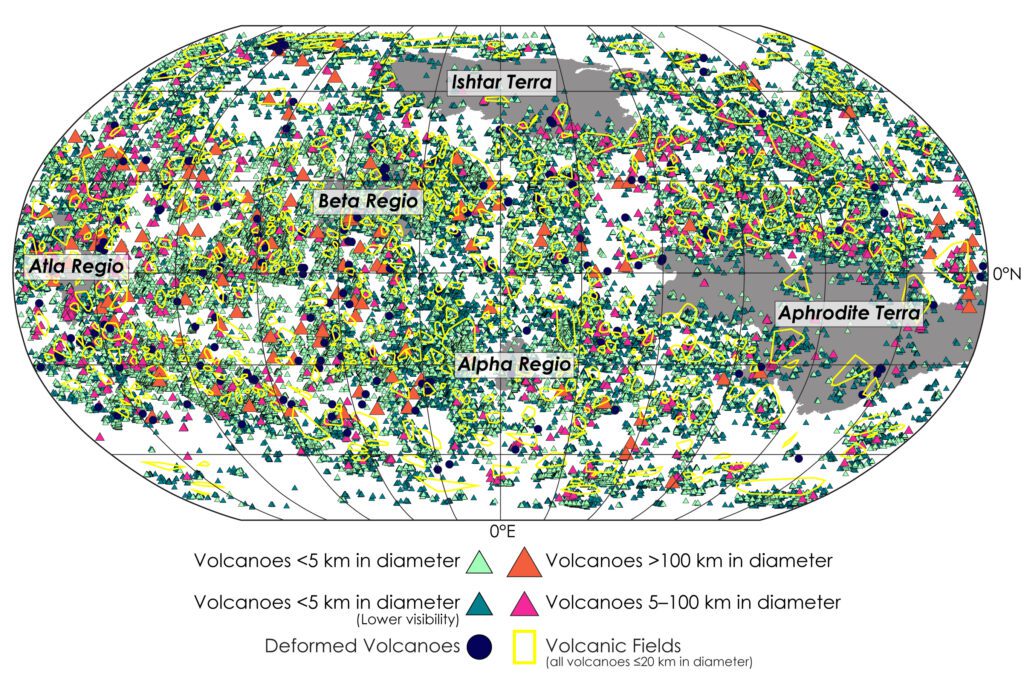Just recently, evidence suggesting that there is an active volcano on Venus was reported by researchers. Now, two other scientists have published a new map of the planet and its 85,000 volcanoes, which might help to discover new fresh lava flows and inform future missions that will study the second planet from the Sun.
The map was devised by planetary scientists Paul Byrne and Rebecca Hahn from Washington University in St. Louis. It is based on data collected by NASA’s Magellan mission, which orbited Venus from 1990 to 1994 and mapped the surface of the planet using radar. The team reports that 99 percent of the volcanos are less than 5 kilometers (3 miles) across.

The map featuring all the volcanic features on Venus. Image Credit: Rebecca Hahn, Washington University in St. Louis
“This paper provides the most comprehensive map of all volcanic edifices on Venus ever compiled,” senior author Byrne, an associate professor of earth and planetary sciences, said in a statement. “It provides researchers with an enormously valuable database for understanding volcanism on that planet — a key planetary process, but for Venus is something about which we know very little, even though it’s a world about the same size as our own.”
The work suggests some very interesting volcanism on Venus. First of all, there are so many volcanos. There is no complete and accurate count of all volcanos on Earth, but the potentially active ones add up to about 1,350, a small number by comparison – also making this one of the most detailed maps of volcanos everywhere.
“We came up with this idea of putting together a global catalog because no one’s done it at this scale before,” first author Hahn, a graduate researcher in earth and planetary sciences, explained.
Another fact is that most of them are small. Only a tiny fraction of the Venusian volcanos are in the 20-100 kilometer (12-60 mile) diameter range, indicating something about magma availability and eruption rates. Also, the smaller volcanos seem to be clustering in certain areas.
“They’re the most common volcanic feature on the planet: they represent about 99 percent of my dataset,” Hahn said. “We looked at their distribution using different spatial statistics to figure out whether the volcanoes are clustered around other structures on Venus, or if they’re grouped in certain areas.”
The researchers have made the database and map publicly available for others to use.
“We’ve already heard from colleagues that they’ve downloaded the data and are starting to analyze it — which is exactly what we want,” Byrne said. “Other people will come up with questions we haven’t, about volcano shape, size, distribution, timing of activity in different parts of the planet, you name it. I’m excited to see what they can figure out with the new database!”
The team suspects that many more volcanic structures exist on Venus, but the resolution from Magellan doesn’t allow for a more detailed census. NASA has recently postponed to at least 2031 a follow-up mission to Venus that would provide a more detailed map of the surface.
The work detailing the dataset was published in JGR Planets.
Source Link: Map Shows All 85,000 Volcanos On Venus For The First Time